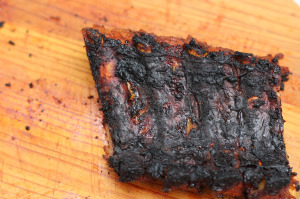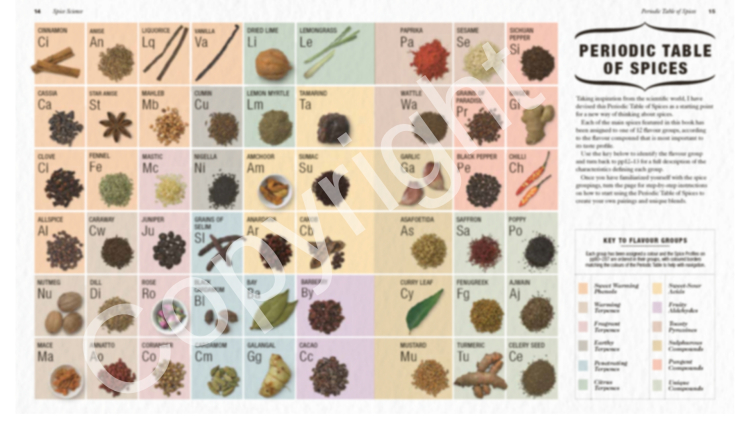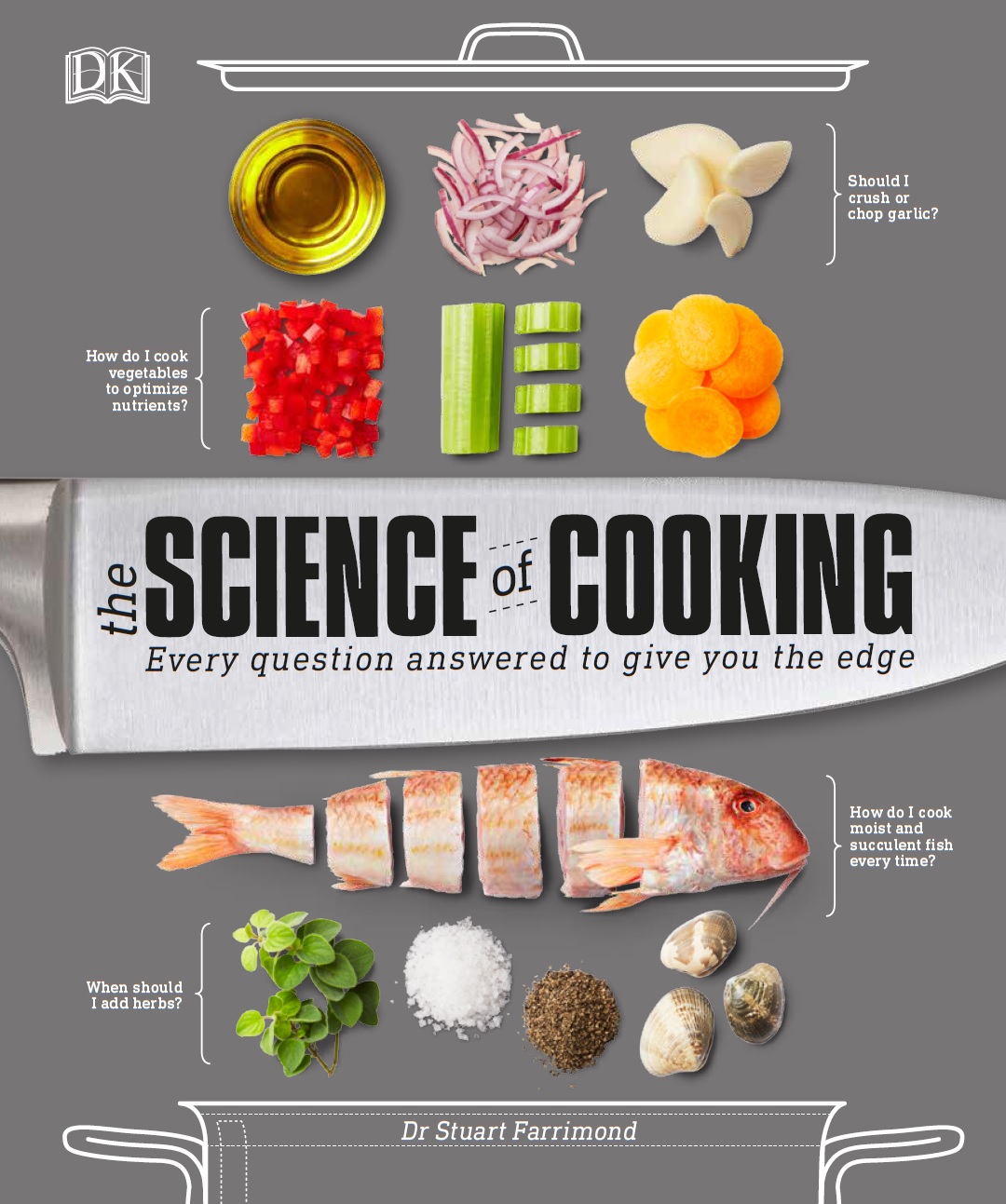 It’s been about a year since you last read one of my blog posts and I confess that book writing is a busy, all-consuming existence. This much-loved blog has been sadly dormant whilst I have chiselled away over a hot laptop in my writer’s cave. Throughout this blog wilderness, I have been key-tapping and kitchen experimenting for Book Number Two, which I am delighted to say is now available for purchase online and in all good book stores. Called ‘The Science of Spice’, I use science to explain how we can cook with the most misunderstood of culinary ingredients with confidence.
It’s been about a year since you last read one of my blog posts and I confess that book writing is a busy, all-consuming existence. This much-loved blog has been sadly dormant whilst I have chiselled away over a hot laptop in my writer’s cave. Throughout this blog wilderness, I have been key-tapping and kitchen experimenting for Book Number Two, which I am delighted to say is now available for purchase online and in all good book stores. Called ‘The Science of Spice’, I use science to explain how we can cook with the most misunderstood of culinary ingredients with confidence.
There is a world of science that explains why some dishes taste soooo good because of the spices they contain. Everyone knows that oregano in a pasta sauce, chilli in a fajita or a crack of pepper over a freshly seared steak will get the taste buds tingling. But what on earth do we do with that little-used jar of cumin powder?
Why are the curries we cook at home never as good as the ones served at our local restaurant?
And will you ever again need to use the packet of black cardamom seeds you once bought for a recipe three years ago?
I have been given the green light by the nice folks at publisher DK Books to reveal the innards of the book. So as a means of whetting your appetite, I offer you the top three reasons why I think so many cooks leave their spice jars gathering dust at the back of the kitchen cupboard…
Why we are scared of cooking with spices
1. Spices taste awful

Does your perfume have the smell of poo?
Most cooks have, at some point, had a car crash of a meal by being too heavy-handed with the chilli powder. It only takes one disaster to realise that spices are powerful ingredients. This is for one simple reason: they are supposed to taste bad.
This is because many spices do, in fact, contain poisons (or substances that mimic poisons). Spices come from any part of a plant except the leaves (which we call herbs). These noxious substances are a plant’s deliberate defence against having parts of its anatomy chewed off. They stockpile a payload of disgusting-tasting chemicals and toxins in their most precious parts – seeds, flower buds, bark and roots. Just try chewing a whole coriander seed or having a nibble on a cinnamon stick and you will experience mouth-filling bitterness and an eye-watering nastiness that rushes up the nose.
But here comes the strange thing: these foul chemicals are pleasant and aromatic in tiny amounts. For example, skatole is the substance that gives poo its revolting stench but in minute amounts has a fruity, floral scent. The poo-smell chemical is even used as a food flavouring and perfume additive! Cooking with spices needs a gentle touch – more can always be added later in cooking.
2. You were never shown how to cook them
If you were brought up in a home of ‘meat and two veg’ cuisine like me then no one showed you how to cook with spices. A powdering of pre-ground pepper on the mashed potatoes was as extravagant as it got.
I once thought that you use all spices in the same way. Of course, there’s nothing stopping you sprinkling in ground spices like salt during cooking, but you would be doing yourself and your diners a huge disservice. Spices need to have their powerful flavours coaxed out of them. Treat them like you would a steak: sear or fry them in a pan before adding other ingredients - some cooks call this ‘blooming’ the spices. Crack or grind whole spices beforehand to help the stockpile of aromas and flavours escape their woody cocoon, not forgetting that big chunks may need to be fished out before serving.

This is a bit overdone!
Browning spices like this at the start of cooking triggers a flavour reaction that is like magic, called the Maillard reaction (pronounced ‘may-ard’). On the scientific level, fragments of protein and sugar on the surface of the spice clatter together, tearing each other apart before reforming together as new, fragrant, tasty substances a fraction of a second later. It’s the same wizardry that turns bread into toast, potatoes into fries, and the brown crispy bits on bacon.
Whole or ground, taking a couple of moments to fry your spices is a no-brainer. Bitterness burns off and nutty, smoky, complex flavours are birthed.
Ground spices burn and stick to the bottom of the pan easily so need plenty of oil and a brief fry. Do it once and you’ll never turn back.
3. You need to add fat to get the taste
Most of the substances that give spices their flavour (called ‘flavour compounds’) dissolve really badly in water. You’ll see this if you put some mint sprigs into a jug of water – it takes a very long time before the water resembles a minty drink.
The best way to let a spice’s flavour spread throughout a dish is by cooking with oil or fat. Plonking it into a watery sauce is unsatisfying - make sure there is enough fat in a dish (with cream, oils or butter, for example) otherwise it will be bland and one-dimensional. You don’t need to ladle in coronary clogging amounts of grease, but some fat is needed to experience the full flavour.
4. They have weird names
Even after a year writing a book about spices, there are still plenty of spices that I haven’t yet cooked with. Not knowing a spice can be intimidating for a cook: you wouldn’t go into a record shop to buy an album for a band you’d never heard of - and you aren’t likely to try a pot of ajwain, mahleb or galangal if you don’t know what they taste like. Fret not food fans, it needn’t be this way.
In the process of studying spices in all their varieties, I discovered that nearly all spices fall into different families (or genres, to use the musical analogy), based on the punchy chemicals that give them their taste and flavour. By looking at what family a spice belongs to, you can predict its core flavour without trying it. You can also know what other flavours and spices it will probably work well with. In ‘Science of Spice’, I charted these groups in a ‘periodic table’ (copyright restrictions mean I can’t give a full resolution image):
The spices that belong to the same group generally make good bedfellows – mustard, curry leaf and garlic, for example, will complement each other well in a stew, curry or roast dinner. There are some more surprising links if you look at the periodic table - like caraway seeds and nutmeg
This scientific grouping also helps you prepare dishes according to the tastes you want to bring to the table. Smoky, sweet, earthy, floral – you can just pick spices from the appropriate spice groups.
5. We don’t like messing up
You need to experiment to find out what works. Don’t fear messing up – you can start by using a trusted recipe then try swapping one of the spices for another spice in that group. Then add extra complexity by adding in a new flavour group spice.
Play and have fun!
That’s what the kitchen is for, after all.

—
A bit more about the book…
I may be biased, but The Science of Spice is a great book and offers the world’s most comprehensive scientific exploration of culinary spices. It boasts:
- A hitherto unparalleled catalogue of the main flavour compounds in the major culinary spices.
- An explanation of what this science means to the everyday cook, and guidance on how to make unique spice blends and devise your own recipes.
- Spice blend recipes from all of the world’s significant culinary regions – from Africa to the Americas to the Middle East to East Asia.
- A history of each spice, the plant it comes from, how it is produced, as well as advice on different types and buying, storing, preparing and cooking.
- Dozens of gorgeous recipes to try.
- Lots of stunning photos, maps, diagrams and imagery!
You can buy the book online here
The book will be available in North America from 6th November 2018 and can be bought online here
Other international versions will be released soon after!










Discussion
No comments yet.